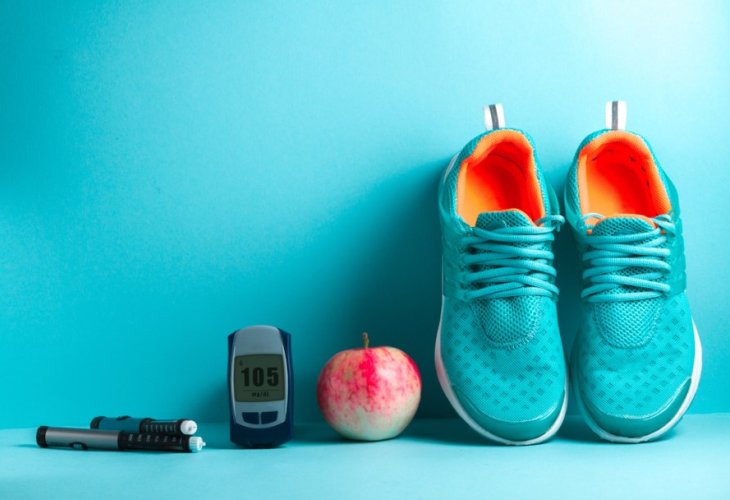Diabetics? The Double Danger to Watch Out for in the Scorching Summer Heat
The beach, poolside fun, or a nature hike—the intense heat can negatively affect your blood sugar levels. So what should you do? Drink plenty of water, avoid physical activity during peak heat, and maintain a personal plan to keep blood sugar levels in check.
 (Photo: shutterstock)
(Photo: shutterstock)Summer, trips, and intense heat, we all feel the struggle of this combination. However, diabetics face greater risks while traveling in the sun, and it's important to be aware and take precautions. Here are some things to protect against.
Dehydration
Dehydration is a particularly dangerous factor for diabetics, especially in the summer season. People with diabetes tend to lose more fluids and reach a state of dehydration faster. In recent years, we've witnessed extreme heat waves and tend not to notice the fluid loss when we don't drink enough, disrupting our fluid balance, leading to increased blood sugar levels. Additionally, as temperatures rise, we sweat to cool down, resulting in more fluid loss.
Increased blood sugar levels lead to frequent urination, which causes further fluid loss and reduces insulin efficiency. It's essential to drink plenty of fluids, even if you are not thirsty. Remember that about 70% of our body is water.
In light of the fourth wave of the coronavirus and the fact that elevated body temperature leads to fluid loss, COVID-19 poses a double threat to diabetics. A diabetic who contracts COVID-19 can quickly become dehydrated and require intravenous fluid therapy.
Stress
Stressful situations are the primary reason the body releases cortisol—a hormone that helps us cope with complex situations. When cortisol is released into the bloodstream, heart and breathing rates speed up, and glucose and protein stores are released from the liver into the blood to become available energy for muscles. Essentially, this means the body releases sugar into the blood to make energy accessible. Additionally, cortisol makes it difficult for the pancreas to secrete insulin, which can worsen the situation.
The hot summer months make us more irritable, exhausted, and stressed. Add to this the fourth wave of COVID-19, which already puts diabetics in a risk group and increases uncertainty, leading to an additional rise in stress and consequently, an increase in blood sugar levels.
So what should you do to release stress? Practice breathing exercises, adopt an optimistic outlook, and engage in physical activity.
Exercise – Not During Peak Heat
Physical activity is one of the most effective ways to prevent diabetes and improve diabetics' health. Exercise affects metabolism in general and blood sugar levels in particular. Engaging in physical activity leads to an acute increase in insulin sensitivity in muscles, liver, and fat cells. Even a single workout can increase insulin sensitivity for up to 16 hours afterward.
The chronic effects of physical activity relate to an increase in active muscle tissue. The more active muscle tissue there is, the greater the glucose uptake by muscles, allowing for more effective blood glucose balance.
So what should you watch out for? Exercising in the scorching heat accelerates dehydration and fluid loss in the body. Be sure to exercise in the evening hours when the heat is no longer at its peak. It has been proven that exercising in the evening aligns well with the biological clock, benefiting both diabetes management and overall metabolism.
Keep Medical Equipment Out of the Sun
Exposure of insulin to heat can impair its effectiveness. Do not leave insulin in a place exposed to sunlight or inside a car. Keep your insulin in a shaded area. Extreme heat can damage medications and blur readings on blood sugar monitoring devices. Do not leave your medical equipment in the blazing heat. If you spend some time outside, arrange a shaded and cool place in advance where you can store it.
Summer Fruits and Foods
Summer fruits are incredibly delicious but also very sweet and rich in simple sugars. However, consuming fruits is important as a source of dietary fiber, so diabetics should check the impact of fruits on their blood sugar levels. A continuous glucose monitor without pricks can assist in understanding this. Naturally, natural juices do not fall into this category as they lack fiber and fruit solids. They remain a beverage rich in sugar. Additionally, fruit juice contains much more fruit than in its raw form, potentially greatly increasing the sugar content from the squeezed fruit.
So how many fruits should you eat a day? It is recommended to cut the fruit into squares and place them in a medium-sized cup. The recommended amount for women is 1.5 to 2 cups, and for men, 2 to 2.5 cups of fruit daily until age 60, after which the recommended amount decreases to 2 cups. It is advised to consult with medical staff about what is permitted to eat and even use a continuous glucose monitor without pricks.
For diabetics, it is crucial to pay attention to carbohydrate intake and what directly affects blood sugar levels. A good diet rich in fruits is an important tool for diabetes management, but it requires a personalized plan for balancing and controlling blood sugar levels.
Professor Julio Weinstein is the head of the Diabetes Unit at Wolfson Medical Center and a senior diabetes doctor at DMC Center for Sugar Treatment

